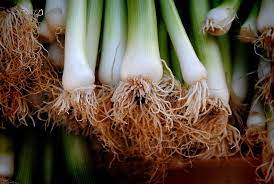No products in the cart.

Firstly, introducing Auscrops, a high-tech market vending company bridging farmers and customers together through market vendors. Click here to find out more about How To Grow Spring Onions as well fruit and vegetable offers.
How To Grow Spring Onions
When it comes to effortless yet rewarding gardening ventures, these vibrant green stems rank highly. They’re resilient, grow rapidly, and deliver a crisp, mildly sharp flavour that’s great for culinary creations. So, how can you grow them in your backyard? Let’s delve into it.
Step 1: Getting Started
Firstly, choose a sunny spot in your garden. These plants love the sunlight, and it promotes robust, healthy growth. Additionally, make sure your chosen spot has well-draining soil, which is essential for these plants to thrive.
Step 2: Preparing the Soil
Before sowing your seeds, it’s important to prepare the soil well. Break up any large clumps and remove stones or other debris. Furthermore, consider adding compost or well-rotted manure to enrich the soil and provide your plants with essential nutrients.
Step 3: Planting the Seeds
Now, onto the exciting part – planting. Sow the seeds about 1cm deep and 30cm apart. Additionally, you can grow multiple rows, but make sure to leave about 30cm of space between each row. This arrangement provides ample room for growth.
Step 4: Taking Care
Water your newly planted seeds well, but avoid soaking the soil. These plants prefer a consistent, moderate level of moisture. Additionally, remember to weed regularly to prevent competition for nutrients and water.
Step 5: Harvesting
Now for the best part – harvesting your homegrown greens. This usually occurs around eight weeks after planting. However, don’t wait for them to reach full size. They taste best when young and tender, so don’t hesitate to start enjoying your crop.
A Few Extra Tips
Remember, these plants are relatively cold-resistant. Nonetheless, in case of a severe frost, consider covering your plants with a cloche or some fleece to offer protection.
Interestingly, you can also grow these plants in containers. Just make sure there are adequate drainage holes, and never let the compost dry out completely.
Happy Growing!
In conclusion, cultivating these wonderful green stems at home isn’t rocket science. It just requires a bit of patience, attention, and love. So, get your hands dirty, sow some seeds, and soon, you’ll have a garden full of crisp, fresh greens ready for your kitchen adventures. Happy growing!
Click here to read similar articles.
 Français
Français 












